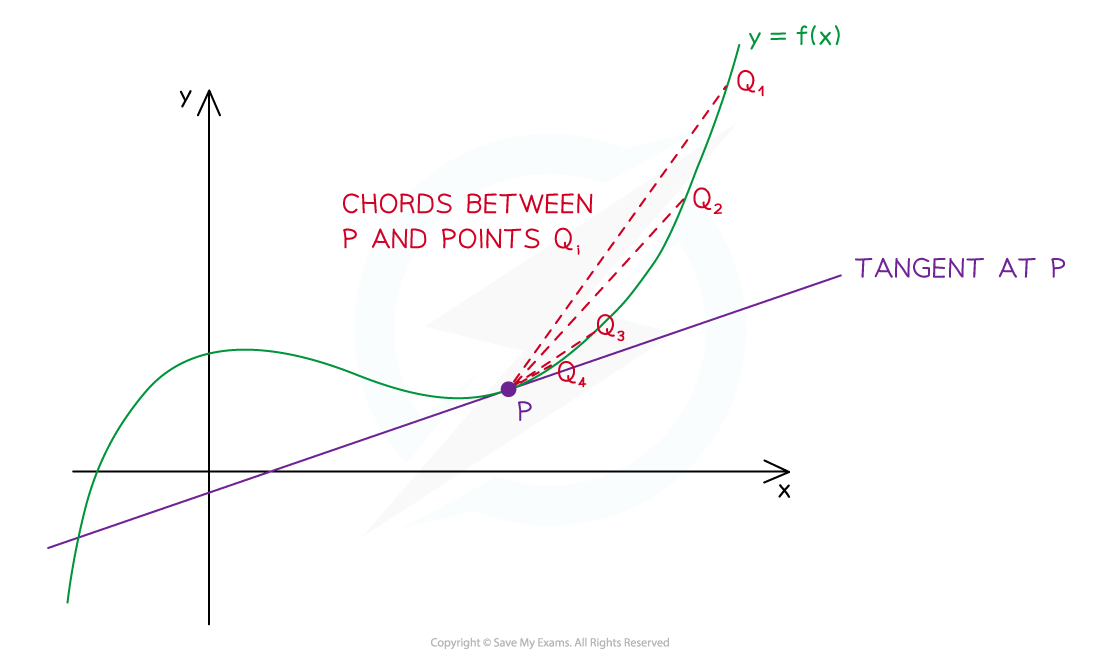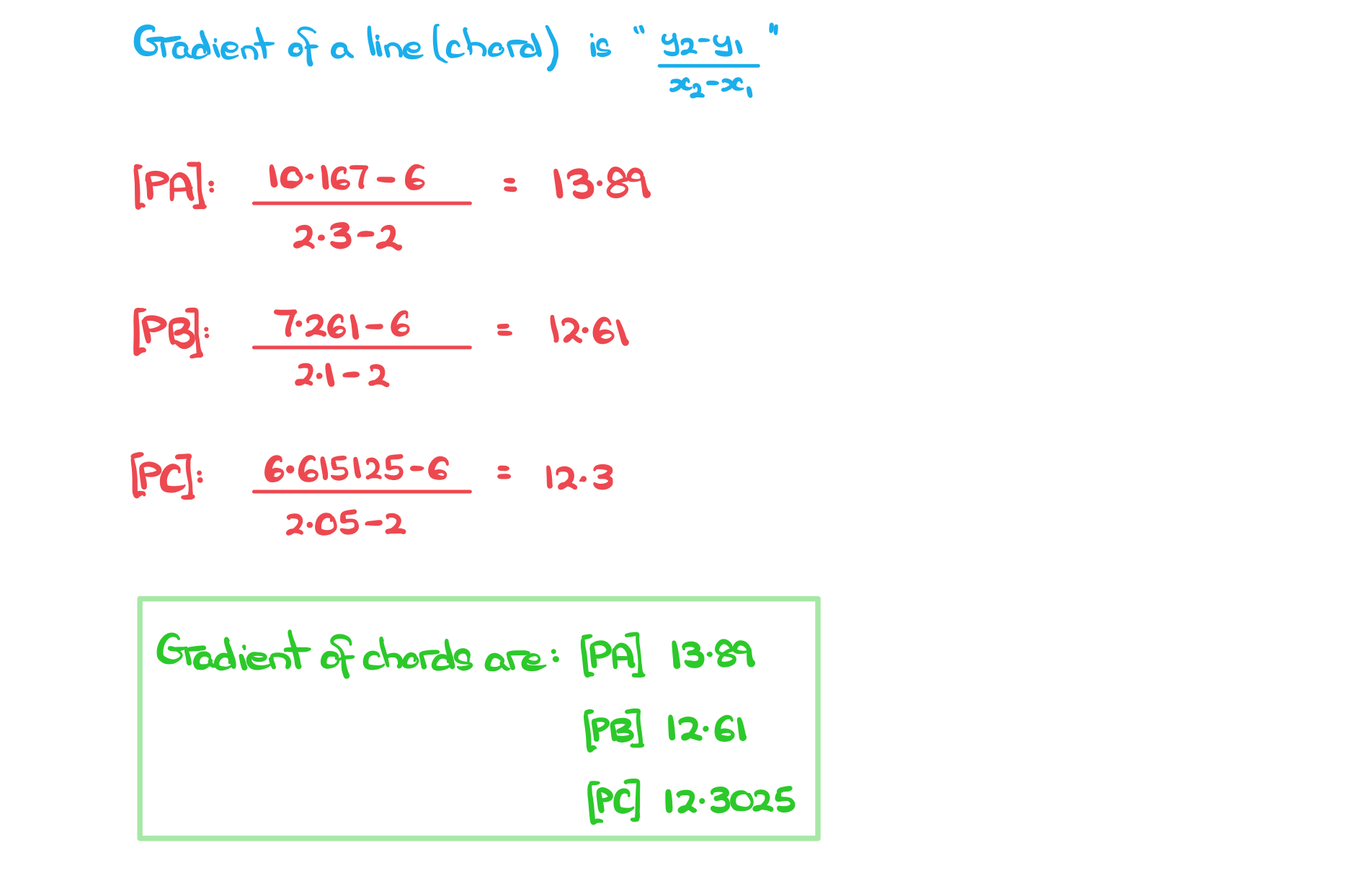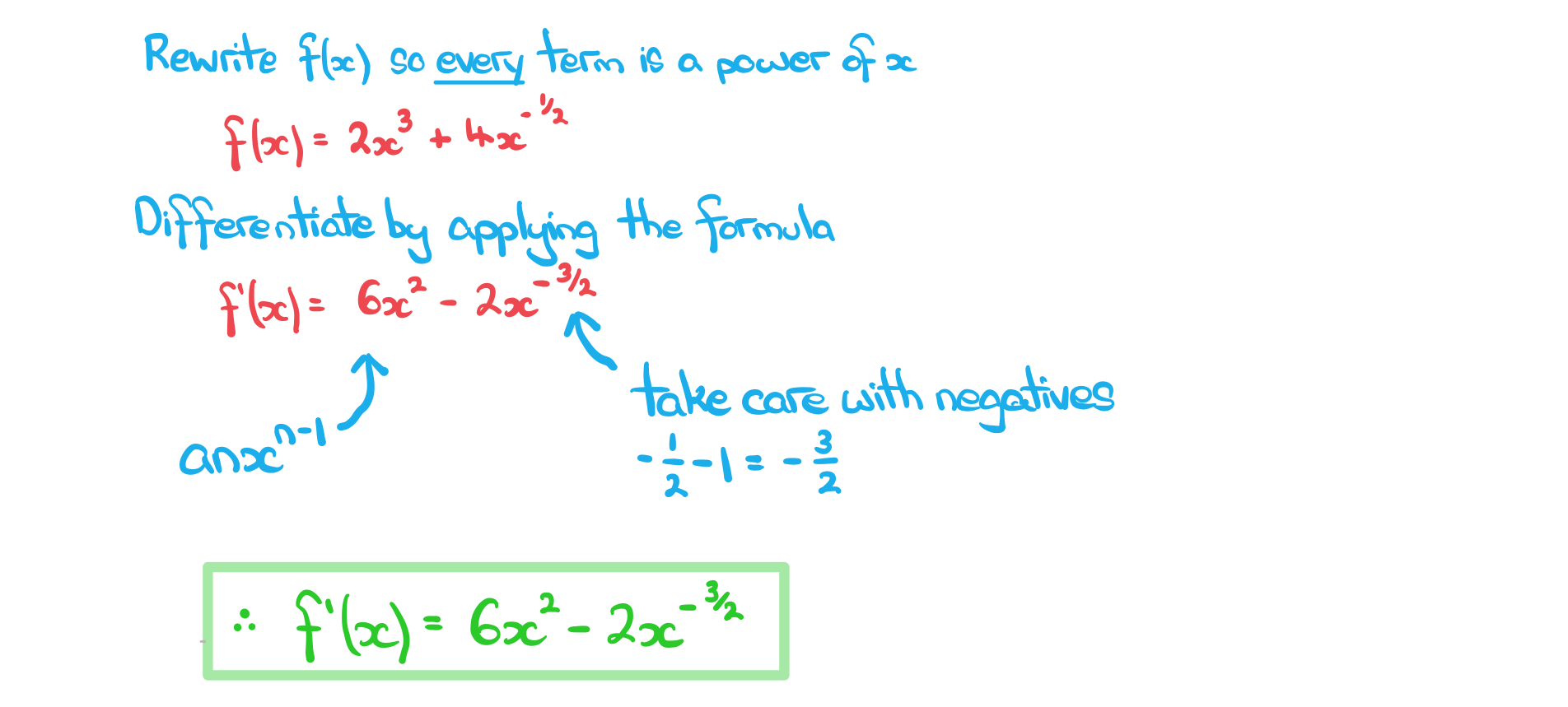Introduction to Differentiation (DP IB Analysis & Approaches (AA)) : Revision Note
Did this video help you?
Introduction to Derivatives
Before introducing a derivative, an understanding of a limit is helpful
What is a limit?
The limit of a function is the value a function (of
) approaches as
approaches a particular value from either side
Limits are of interest when the function is undefined at a particular value
For example, the function
will approach a limit as
approaches 1 from both below and above but is undefined at
as this would involve dividing by zero
What might I be asked about limits?
You may be asked to predict or estimate limits from a table of function values or from the graph of
You may be asked to use your GDC to plot the graph and use values from it to estimate a limit
What is a derivative?
Calculus is about rates of change
the way a car’s position on a road changes is its speed (velocity)
the way the car’s speed changes is its acceleration
The gradient (rate of change) of a (non-linear) function varies with
The derivative of a function is a function that relates the gradient to the value of
The derivative is also called the gradient function
How are limits and derivatives linked?
Consider the point
on the graph of
as shown below
is a series of chords

The gradient of the function
at the point
is equal to the gradient of the tangent at point
The gradient of the tangent at point
is the limit of the gradient of the chords
as point
‘slides’ down the curve and gets ever closer to point
The gradient of the function changes as
changes
The derivative is the function that calculates the gradient from the value
What is the notation for derivatives?
For the function
, the derivative, with respect to
, would be written as
Different variables may be used
e.g. If
then
Worked Example
The graph of where
passes through the points
and
.
a) Find the gradient of the chords and
.

b) Estimate the gradient of the tangent to the curve at the point .

Did this video help you?
Differentiating Powers of x
What is differentiation?
Differentiation is the process of finding an expression of the derivative (gradient function) from the expression of a function
How do I differentiate powers of x?
Powers of
are differentiated according to the following formula:
If
then
where
This is given in the formula booklet
If the power of
is multiplied by a constant then the derivative is also multiplied by that constant
If
then
where
and
is a constant
The alternative notation (to
) is to use
If
then
e.g. If
then
Don't forget these two special cases:
If
then
e.g. If
then
If
then
e.g. If
then
These allow you to differentiate linear terms in
and constants
Functions involving roots will need to be rewritten as fractional powers of
first
e.g. If
then rewrite as
and differentiate
Functions involving fractions with denominators in terms of
will need to be rewritten as negative powers of
first
e.g. If
then rewrite as
and differentiate
How do I differentiate sums and differences of powers of x?
The formulae for differentiating powers of
apply to all rational powers so it is possible to differentiate any expression that is a sum or difference of powers of
e.g. If
then
Products and quotients cannot be differentiated in this way so would need expanding/simplifying first
e.g. If
then expand to
which is a sum/difference of powers of
and can be differentiated
Examiner Tips and Tricks
A common mistake is not simplifying expressions before differentiating
The derivative of
can not be found by multiplying the derivatives of
and
Worked Example
The function is given by
, where
Find the derivative of


You've read 0 of your 5 free revision notes this week
Unlock more, it's free!
Did this page help you?
